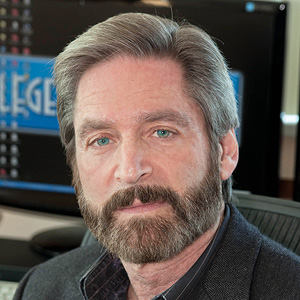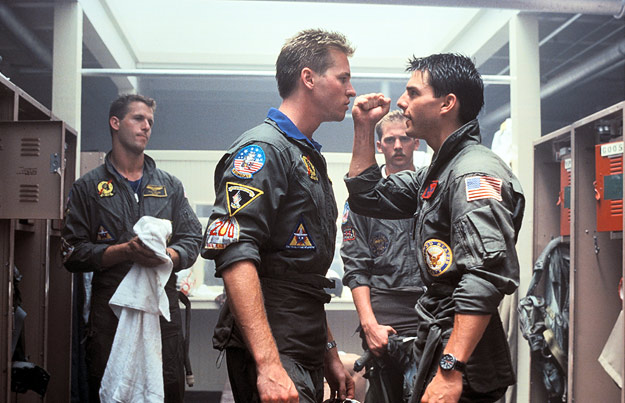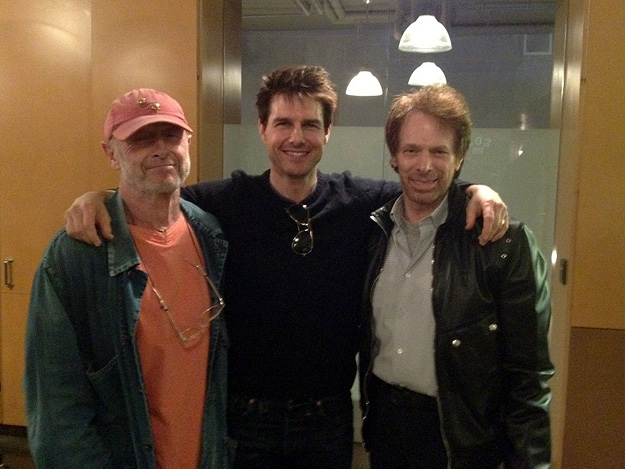And it was! The new 4K restoration looks brilliant and consistent. It was a far better visual experience than Raiders, for me at least, which seemed to run out of resolution on the four-story IMAX screen more often than one would expect. Top Gun’s aerial photography was as brilliant as ever, made far more so since the planes were now effectively life size.
Strangely though, the 3D was almost a non-factor. So much of the movie looked flat – the all the important bits anyway. Bar rooms, establishing shots – essentially those things that held on screen longer is where the pop kept landing, instead of the in-your-face F-14 combat action where I wanted it the most.
So then I went home, somewhat puzzled by what I’d just seen, and put in the Blu-ray 3D version.
WOW.
What a difference! The carrier deck comes alive with depth. Cougar’s fighter hangs halfway into my living room. Cockpit reversal shots have fantastic pop and depth. If the IMAX 3D experience was a slow simmer, the Blu-ray is a full rolling boil.
My mind was completely boggled. How is it that a million dollar IMAX 3D theater is getting its butt kicked by a $2000 3DTV? Was it just me – something unique to my own eyes? Probably not, because my friend had the very same experience and we were both sitting in the theater’s sweet spot. Could there have been a bad alignment of the projection system? Possibly, but then the 3D trailers before the film started were perfect, with real pop. So why did I have such different 3D experiences at home versus the theater?

Barry Sandrew, the founder, CCO and CTO of Legend3D, which did the conversion on Top Gun as well as 3D standouts like Transformers: Dark of the Moon and Hugo (even native 3D films have converted sequences), was kind enough to answer some questions about this for me:
Jeff Kleist (The Digital Bits): When viewing Top Gun 3D as an IMAX presentation, I noticed the 3D wasn’t popping as much as it had on the Blu-ray. What are some of the potential reasons for this? Is it simply the larger screen or the fact that the film’s fast-cut photography wasn’t originally captured with 3D in mind?
Barry Sandrew (Legend3D): Though Top Gun 3D was not adjusted specifically for the larger IMAX screen, that should not have negatively influenced your experience. In fact, much of what you describe could have been the result of the location in the theater where you were sitting as well as where you were watching the 3D Blu-ray on your TV. IMAX, conventional theaters like RealD and 3DTV viewing provide inherently different stereo experiences that cannot easily be equated. However in all three cases, the further you sit from the screen, the greater the disparity will appear. As I’ve pointed out in my blog, you simply need to find a distance from the screen that provides you with the most satisfying, personal stereo experience. That distance can change depending on the movie and genre. The disparity on Top Gun was optimized for conventional 3D theater screens such as RealD as well as any 3DTV, tablet or cell phone, so your Blu-ray will faithfully exhibit the conversion produced by Legend3D and approved by Tony Scott. Precisely how it’s being experienced is up to each individual.
JK: What were the most challenging sequences in Top Gun to convert and why?
BS: The most challenging scenes are not what most people would guess. They were not the fast action shots, the jet canopy shots requiring precise handling of transparencies, nor were they the extreme close-ups of actors. Instead the most challenging shots included Charlie and/or Maverick sitting in a bar at the officers club, talking and having a drink or a long dolly shot with Charlie and Maverick walking down a hallway. Normally hair and profiles are not an issue, but when they are backlit as Tony liked to direct, they become details that are 100% unforgiving. Let me explain it this way. When a person or object is moved away from a background during the conversion process, it produces a hole in the frame where the object used to be. It’s literally like cutting a person or object out of a photograph. Only in a conversion, the person or object that is cut out of the background, is still there though placed somewhere in space in front of the picture, only partially occluding the hole it left. With the person or object placed in 3D space, the edges of the hole it left behind in the background become visible, as if we are looking around the object or person. Filling in that hole with real or creatively manufactured (painted) background data at the proper depth is one of the most difficult aspects of conversion. When done correctly it can be flawless, but when done poorly it is very obvious on the screen.

JK: Can you describe Legend3D’s process when converting a shot? What do you think makes your technology/methodology the best for this movie?
BS: It’s difficult to describe the process in a narrative like this without the aid of visual examples. However, I can point out instances where Legend3D has created unique toolsets for handling what might otherwise appear to be impossible or particularly difficult shots. The curved transparencies enveloping the pilots as seen from within the jet canopies were handled using special tools and procedures developed by Legend3D that allowed for very precise and authentic placement. Likewise, the dirt and grime on the front and side of the canopies as seen from outside of the jets, as well as the transparent jet exhaust, were all handled using proprietary tool sets that were developed and constantly refined over the past three years.
Close up character shots represent one aspect of conversion for which Legend3D has built a reputation for the highest quality. Charlie, Maverick, Goose nor Iceman had what one might could call deep creased and wrinkled character faces, but with extreme close-ups even the most minute facial details become focal points for the audience, particularly the eyes. Legend3D’s process encourages its artists to include as much facial detail as required for a particular effect. We are always cognizant of the fact that audiences spend at least 40% of the time looking at an actor’s eyes in close-ups so eye detail has to be very precise down to the reflections in the eyes. Perhaps one of many things that distinctly characterizes Legend3D’s conversion process is the attention to and inclusion of this minute facial detail that is so critical to immersive stereo.
JK: What is your favorite shot or sequence that stands out in Top Gun 3D?
BS: Undoubtedly all of the aerial shots that characterized the film were the most stunning following conversion. The sense of extreme depth in the dog-fight scenes as well as the hyper-stereo landscapes that were seen from the perspective of the pilots made the film much more exciting and gave the audience an authentic feeling of being there. We brought in retired Top Gun pilots to experience the aerial shots so we could get a sense of authenticity from the perspective of those who experienced it firsthand. We made constant iterations to reflect their input and I believe it paid off.
JK: Does Legend3D expect more ‘classic’ re-releases in 3D? Given a choice, what movie would you do?
BS: We are always considering catalog titles that might be appropriate for conversion. I feel that many of our favorite action films as well as our most beloved dramas, comedies and love stories from the past can benefit from proper stereo conversion. I’ve spent the past two decades working on the restoration of hundreds of classic films that included some of our most iconic cinema titles so vintage media does not pose any particular challenges for us. In fact, our experience with older films makes us uniquely adapted to give them the treatment and respect that they deserve and often demand.
There are many classic films and some of the most successful film franchises that would be ideal for conversion. It’s not only contemporary films that bridge the past 10 years that are appropriate. It’s also films that reach into the 50’s and even the 40’s that I believe can benefit from conversion. I’ve heard a few people discuss how obsolete references in a film might detract from the believability of stereo conversion, but taken within the targeted objective of suspending disbelief, these dated references should have no negative consequences that detract from the story and experience.
--END--
For whatever reason, the 3D illusion just didn’t converge on the big IMAX screen for either me or my friend. I frankly think that it might have something to do with the size of the screen. The fast cuts just didn’t give our brains enough time to put such a large image together properly, while a film shot with 3D in mind has a lot more “hang time” that makes IMAX viewing more productive. But no matter how you slice it, Top Gun 3D is already the conversion king of 2013 for Blu-ray 3D, in my humble opinion. Hat’s off the guys at Legend3D for their attention to detail.
Top Gun was the first Tony Scott movie I ever saw… and now the film’s 3D conversion (which he personally supervised) will be the last. The fact that the photography is just as stunning and effective today as it was 25 years ago is a testament to his skill and talent. I’ll miss his contributions to film a lot. Rest in peace Mr. Scott.
- Jeff Kleist
Be sure to read my full review of Top Gun 3D on Blu-ray 3D.
I’ll leave you with an image posted by producer Jerry Bruckheimer, as posted on his Twitter feed – Tony Scott, Tom Cruise and Jerry Bruckheimer after viewing Top Gunin 3D in February 2012: “Just watched Top Gun for the first time since it was released in 86. Saw it with Tom and Tony in 3D, it was awesome.”

